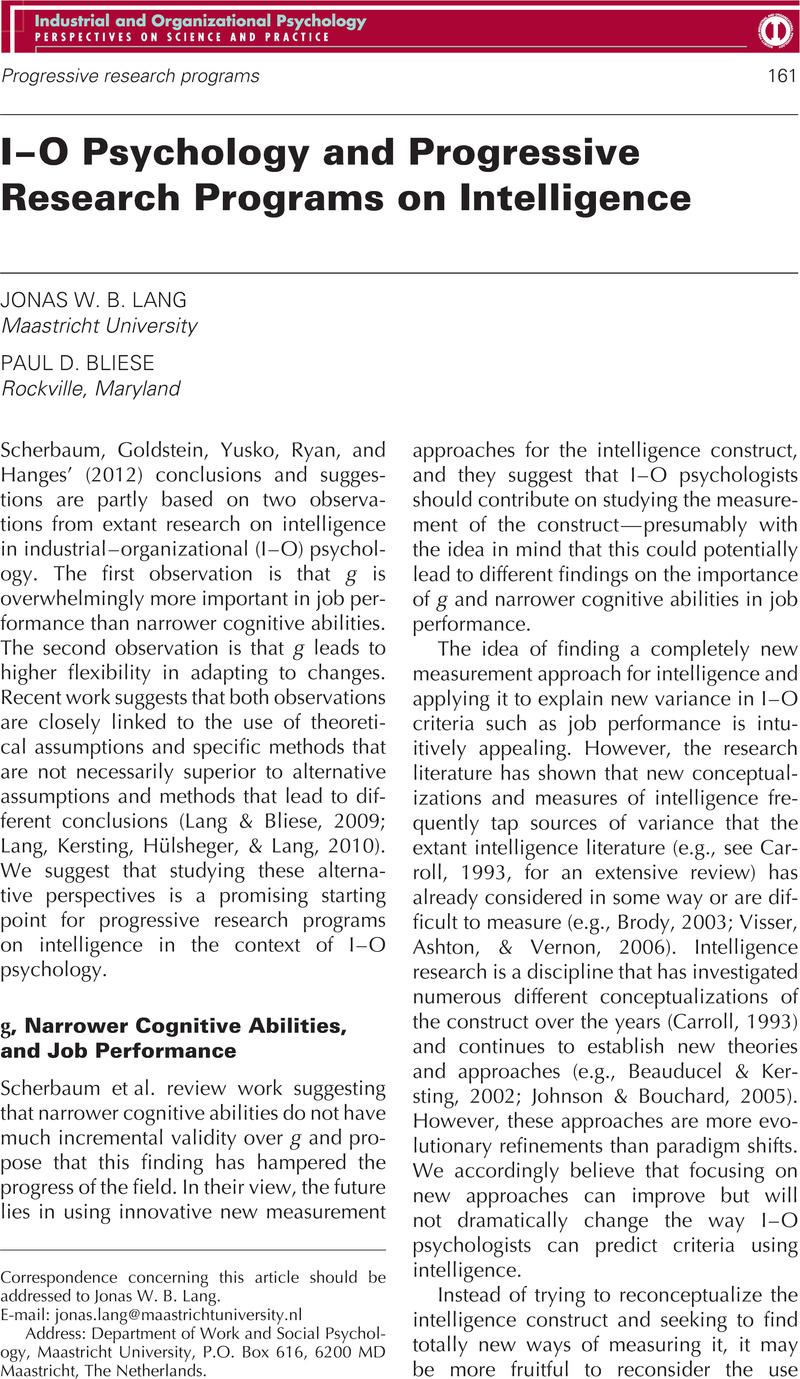Crossref Citations
This article has been cited by the following publications. This list is generated based on data provided by Crossref.
Hanges, Paul J.
Scherbaum, Charles A.
Goldstein, Harold W.
Ryan, Rachel
and
Yusko, Kenneth P.
2012.
I–O Psychology and Intelligence: A Starting Point Established.
Industrial and Organizational Psychology,
Vol. 5,
Issue. 2,
p.
189.
Stanhope, Daniel S.
and
Surface, Eric A.
2014.
Examining the Incremental Validity and Relative Importance of Specific Cognitive Abilities in a Training Context.
Journal of Personnel Psychology,
Vol. 13,
Issue. 3,
p.
146.
Agnello, Paul
Ryan, Rachel
and
Yusko, Kenneth P.
2015.
Implications of modern intelligence research for assessing intelligence in the workplace.
Human Resource Management Review,
Vol. 25,
Issue. 1,
p.
47.
Kell, Harrison
and
Lang, Jonas
2017.
Specific Abilities in the Workplace: More Important Than g?.
Journal of Intelligence,
Vol. 5,
Issue. 2,
p.
13.
Kell, Harrison J.
and
Lang, Jonas W. B.
2018.
The Great Debate: General Ability and Specific Abilities in the Prediction of Important Outcomes.
Journal of Intelligence,
Vol. 6,
Issue. 3,
p.
39.
Stasielowicz, Lukasz
and
Tommasi, Marco
2019.
Does ego depletion impair adaptive performance? A longitudinal analysis.
Cogent Psychology,
Vol. 6,
Issue. 1,
Beier, Margaret E.
Kell, Harrison J.
and
Lang, Jonas W. B.
2019.
Commenting on the “Great Debate”: General Abilities, Specific Abilities, and the Tools of the Trade.
Journal of Intelligence,
Vol. 7,
Issue. 1,
p.
5.
Coyle, Thomas R.
2019.
Tech tilt predicts jobs, college majors, and specific abilities: Support for investment theories.
Intelligence,
Vol. 75,
Issue. ,
p.
33.
Wai, Jonathan
Lakin, Joni M.
and
Kell, Harrison J.
2022.
Specific cognitive aptitudes and gifted samples.
Intelligence,
Vol. 92,
Issue. ,
p.
101650.



